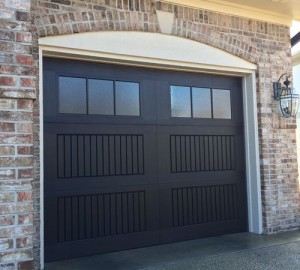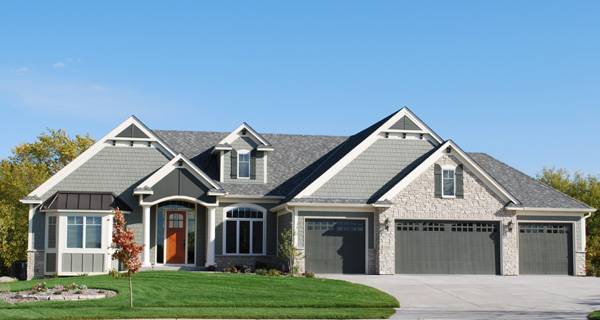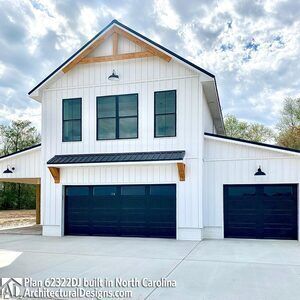
Garage plans with living spaces are a great way of adding an additional room to your home. They can be used to add a guest bedroom, an office, or studio, or even a granny-flat or inlaw suite.
There are many designs to choose from in this category, including simple one- or 2-bay apartments and spacious two-story apartments. This type building lets you make the most of every square inch in your detached garage and create the perfect space to suit your needs.
In some cases, homeowners might have more garage space than they need to build a house. Garage apartment plans are very popular because they allow you to add a room to your garage without having to take down your existing house.

Be aware of the space in your garage and how your family lives. If you only have one garage, a studio apartment or a 1-bedroom unit will work best. This size is ideal for a home office or art studio, or even a small home gym.
If you have a 2 car garage, you'll be able to build a much larger 2 bedroom suite. These garages are usually 22-24 feet (6-7m) wide and 20-30ft (6-9m) deep. You'll be able to create a spacious and comfortable suite with a kitchen and living area.
An accessory dwelling unit (or ADU) is another option for homeowners looking to increase their living space. These plans are becoming more common, especially in cities such as Seattle or Portland, where urban density plays a major role. They can be a cost-effective solution to adding an extra bedroom or an apartment to your home, and they're often the only feasible way to build in areas with zoning restrictions.
ADUs can help you increase your home's value and make your home more spacious. However, you should be aware of the laws and regulations in your area regarding the number of ADUs allowed on a particular lot, and how they're to be used.

ADUs that are not intended for owner occupancy are sometimes rented out. Consider a garage apartment that has an entrance on your main floor if you are a landlord.
Some ADUs have an interior staircase and an exterior doorway to make it easier for people with mobility problems to access the space. If you are designing an ADU to accommodate your elderly parent, make sure it has a wide entryway that allows them to easily maneuver their scooter or wheelchair into the space.
For a modern spin on this classic idea, check out Box Living's sleepout design in Waiheke Island, New Zealand. This contemporary building features a wooden walkway that wends its way down a steep slope to the sleeping space below. This sleepout is an elegant, functional and beautiful piece of architecture that celebrates the idiom's timeless charm.
FAQ
How much does it take to tile a bathtub?
If you're going to do it yourself, you might as well go big. Full bathroom remodels are an investment. However, quality fixtures and materials are worth the long-term investment when you consider how beautiful a space will be for many years.
You can make a big impact on how your room looks. Here's how to choose the right tiles for your home, regardless of whether it's a small renovation or major project.
Decide the type of flooring that you want to install. You have many choices: ceramics, natural wood, stone, porcelain and even stone. Next, pick a style like classic subway tiles or geometric designs. Finally, pick a color palette.
It is important to match the tile to the rest in a large bathroom remodel. You might choose white subway tiles in the bathroom and kitchen, but use darker colors in other rooms.
Next, estimate the scope of work. Is it time to update a small powder room? Or would you prefer to add an extra bedroom in your master suite with a walkin-in closet?
Once you have decided on the scope of the project, visit your local store to view samples. This will allow you to get a feel for how the product is assembled.
Finally, shop online for great deals on ceramic and porcelain tiles. Many retailers offer free shipping or discounts on bulk orders.
What is the difference in a remodel and a renovaton?
A remodel is a major change to a room or part of a room. A renovation involves minor changes to a specific room or part of it. For example, a bathroom remodeling project is considered a major one, while an upgrade to a sink faucet would be considered a minor job.
Remodeling involves replacing a complete room or a part of a entire room. A renovation is simply a change to a specific part of a space. Kitchen remodels can include changing countertops, sinks, appliances and lighting. An update to a kitchen could involve painting the walls or installing a new light fixture.
What is included in a full kitchen remodel?
A complete kitchen remodel is more than just installing a new sink or faucet. You will also need cabinets, countertops and appliances as well as lighting fixtures, flooring, plumbing fixtures, and other items.
A full kitchen remodel allows homeowners to update their kitchens without having to do any major construction. This means that there is no demolition required, making the process easier for both homeowner and contractor.
Kitchen renovations include various services, including electrical, plumbing, HVAC, carpentry, painting, and drywall installation. Depending on the extent of the kitchen remodel, multiple contractors may be required.
Professionals with years of experience working together are the best way ensure a successful kitchen remodel. There are often many moving parts in a kitchen remodel, so small problems can cause delays. DIY is a good option, but make sure to plan ahead and have a back-up plan in case something goes wrong.
How much would it cost to gut a home vs. how much it cost to build a new one?
Gutting a home involves removing everything within a building including walls and floors, ceilings as well as plumbing, electrical wiring, appliances, fixtures, and other fittings. It is often done when you are moving to a new location and wish to make some improvements before you move in. It is often very costly to gut a home because of all the work involved. Depending on the job, the average cost of gutting a home is between $10,000 and $20,000
The process of building a home involves the construction of a house from one frame to another. Next, the builder adds walls, flooring and roofing. This is often done after purchasing lots of land. Building a home usually costs less than gutting and can cost between $15,000 and $30,000.
It all comes down to what you want to do in the space. If you are looking to renovate a home, it will likely cost you more as you will be starting from scratch. If you're building your home, however, you don't have to tear everything down and start over. You can build it the way you want it instead of waiting for someone else to come in and tear everything up.
What are some of the largest costs associated with remodeling your kitchen?
There are a few important costs to consider when renovating a kitchen. These include demolition, design fees, permits, materials, contractors, etc. Although these costs may seem relatively small, if you take them all together, they can quickly add up. They quickly grow when added together.
Demolition is usually the most expensive. This involves removing old cabinets, appliances and countertops as well as flooring. The drywall and insulation must then be removed. Finally, you have to replace those items with new ones.
The next step is to hire an architect to design the space. The permits will be required to ensure the project complies with building codes. Next, you will need to hire someone to actually build the project.
Finally, once the job is done, you have to pay the contractor to finish the job. All told, you could spend anywhere between $20,000 and $50,000 depending on how big the job is. This is why it's important to get estimates form multiple contractors before hiring one.
Planning can help you avoid many of these expenses. You might get better deals on materials and even save some time. You will be able save time and money if you understand what needs to done.
Many people attempt to install cabinets themselves. Because they don't have professional installation fees, this is a way to save money. The problem is that they usually spend more money trying to figure out how to put the cabinets in place themselves. A professional can usually complete a job in half of the time that it would take you.
Unfinished materials can also be a way to save money. Pre-finished materials such as cabinets should be inspected before you purchase them. By buying unfinished materials, you can start using them right away. You can always make a change if things don't go as you planned.
But sometimes, it isn't worth going through all this hassle. You can save money by planning your home improvement project.
What should I do about my cabinets?
It all depends on whether or not you plan to rent your home out. You will need to take down and refinish your cabinets if you are selling. This gives buyers the illusion of brand-new cabinets and helps them visualize their kitchens after they have moved in.
However, if you want to rent your house, you should leave the cabinets alone. Many tenants are unhappy with the mess left behind by former tenants.
The cabinets can be painted to look fresher. Be sure to use high quality primer and paint. Low-quality paints can become brittle over time.
Statistics
- Windows 3 – 4% Patio or backyard 2 – 5% (rocketmortgage.com)
- $320,976Additional home value: $152,996Return on investment: 48%Mid-range average cost: $156,741Additional home value: $85,672Return on investment: (rocketmortgage.com)
- 57%Low-end average cost: $26,214Additional home value: $18,927Return on investment: (rocketmortgage.com)
- Attic or basement 10 – 15% (rocketmortgage.com)
- bathroom5%Siding3 – 5%Windows3 – 4%Patio or backyard2 – (rocketmortgage.com)
External Links
How To
How can you budget for a bathroom?
It is important to be able to afford any remodeling project. It is impossible to expect to pay it off later if it is not possible for you now.
Planning and understanding the costs of a bathroom remodel requires meticulous planning. Bathroom remodeling can be very expensive. There are many factors that influence the cost.
Labor costs are one of your biggest expenses. Labor costs vary depending on the size of the job and whether you hire a professional contractor or a DIYer. Because they are more experienced and have greater expertise, professional contractors charge more per hour.
Materials are another large expense. Depending on your type of material, prices may range anywhere from $100 to $1000 per square foot.
There is also the cost to energy. This includes both gas and electricity bills. Peak demand will cause energy prices to rise.
The time taken to complete the project is another factor to consider. Bathroom renovations require patience and a lot of time. Some projects can take weeks, while others can take many months.
In addition to these three major categories, there are smaller items such as paint, wallpaper, flooring, etc., which add to the project's overall cost.
Here are some tips for bathroom remodeling projects:
-
Determine your Budget - Before you begin any remodeling project, it is important to determine what you can afford. It doesn't matter whether you believe you can afford it. It is important to establish a realistic budget so that you can see where your finances are at all times.
-
Plan ahead - Try to plan your bathroom remodeling for the off-season if you can. The winter months typically bring lower energy usage rates, meaning you will save money on heating and cooling costs. Consider scheduling your remodel for nighttime when there are fewer people using the bathroom.
-
Shop Around - Once you have determined your budget, you need to look around for potential vendors. Many different options are available to you, including local businesses, online retailers, and even friends and family members who may be willing to work with you on the project.
-
Choose An Estimator - Once you have identified all your potential vendors, you should contact each individually to get estimates. You want to make sure you get multiple quotes to ensure you are getting competitive pricing.
-
Get Multiple Estimates. After you receive your initial estimates, it is important to compare them with each other to determine which vendor has the lowest price. Once you have chosen the vendor you want, it is time to ask them for a written estimate.
-
Make Sure To Include All Costs - When preparing an estimate, you should include everything you plan to spend on the project. Particularize on any fees, taxes, permits or other requirements that may be applicable to your area.
-
Don't Neglect Small Details - While planning your bathroom remodel, you should also pay attention to small details. Are you looking for a new toilet, or do you just need one? Is there sufficient space to mount a shower curtain rod on the wall? These modifications can easily increase your project's cost.
-
Consider insurance - Your bathroom remodel will have a significant impact on your insurance coverage. Avoiding insurance can lead to additional costs down the line.
-
Hire a professional - After your bathroom remodel is completed, hire a professional installer to finish the job. You might be able do the job yourself but it's much more enjoyable to have someone else do it.